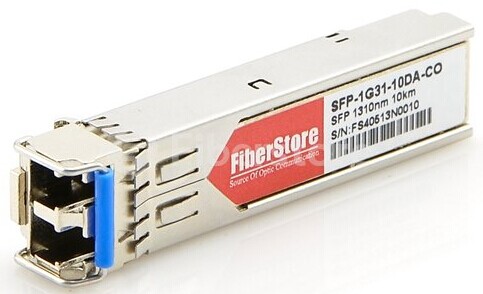What Effects the Compatibility of SFP Transceivers?
When setting up your network, the SFP transceivers you use have great effect on the performance of your system. These SFP transceivers are compatible with multiple devices, but the compatibility of them depends on various factors. Two main factors that should be considered when selecting SFP modules are DDM functionality requirements and checking the ID code and lock out third party components. Here are some details about the factors you should know about SFP transceivers.
An SFP does not necessarily require the DDM functionality, but your application should be compatible with digital diagnostic functionality if it is present. Most designers forget to verify the compatibility before design then face problems later. It’s better to know in advance to avoid complications and reworks, which would waste a lot of time and money. For example, Cisco GLC-LH-SMD compatible 1000BASE-LX/LH SFP transceiver below from Fiberstrore is high performance and cost effective module with DDM function.

Though there is not a comprehensive list of which equipment locks out third party SFPs, it is possible to determine through painstaking trial and error. By trying it, you can determine which host equipment will reject it or not. Most new equipment produced in the last three years will have the lockout functionality.
Keep in mind that all designs for SFP transceivers will go through rigorous testing for compatibility especially with the most popular brands of switching devices and router devices. This is necessary because some companies, in an effort to release a product before the competition, will cut corners. To avoid this, strict standards should be followed to prevent surreptitious practices.
Compatibility may differ with each manufacturer. For instance, HP JD092B X130 compatible SFP from Fiberstrore offers the same function with HP JD092B and it is fully compatible with HP devices. Be sure to know the requirements of every manufacturer to avoid complications. This may require significant research, but doing the research on the front-end will prevent problems on the backend of the design.
Keep in mind that incompatible devices may cause your entire application to malfunction, especially if the voltages are not matched properly. That’s why it’s always important to ensure compatibility initially. If you do not, you’ll run the risk of losing your entire design and the investment associated with manufacturing the device. A little preparation can prevent a lot of heartache and frustration.
In order to avoid problems in designs, it’s best to read the specifications and determine whether the SFP transceivers are compatible with the switches, routers or other equipment. Some incompatibility issues may cause stress on the device that may result in premature failure. Only when all the above factors are taken into consideration can you save time and money as well as improve the efficiency and productivity for your company.